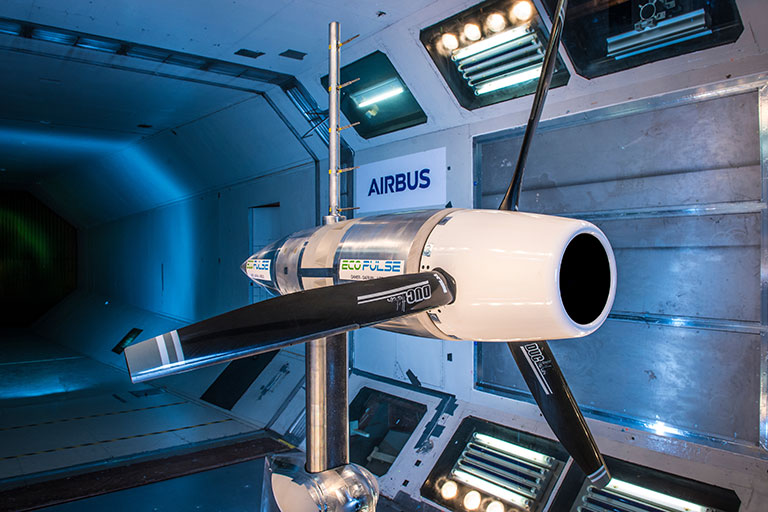As the air industry faces up to a world where more sustainable flight is crucial to its future survival, the race for greener propulsion is on.
In December last year, in the picturesque airport of Tarbes–Lourdes–Pyrénées in southwest France, a landmark moment in hybrid-electric flight was achieved as an experimental aircraft demonstrator took off for its maiden test flight. The EcoPulse is an aircraft co-developed by , and , and the December trial kicks off eight months of flight tests that will explore and establish the viability of distributed hybrid-propulsion systems.
Spreading the load
Hybrid-propulsion is part of Airbus’ decarbonisation roadmap, with the aerospace giant developing a mixture of approaches to its transition to more sustainable aviation systems. However, it’s not working alone and if aviation is to become greener it will be because of efforts form across the industry. Hybridisation is a key part of aviation’s transition, as research shows that it can lower an aircraft’s environmental impact by as much as 5%. As such, EcoPulse’s maiden voyage represents a major milestone in advancing the air industry’s electrification. But what is distributed propulsion? Along the EcoPulse’s wings are spread a set of ‘pods’, each of which contains a hybrid-electric propulsion system with its own high-voltage battery and a ‘turbomachine’ equipped with an electrical generator. This distributing of the aircraft’s propulsion systems and related air flows across its wings improves its aerodynamic and structural performance, eking out marginalised gains which can be combined with more efficient steel-built electric engines.
An engine for change
EcoPulse is based on a modified Daher TBM 900 turboprop aircraft. The standard engine and propeller systems which run on traditional fuels are supported by six wing-mounted propellers, each of which is driven by a 50-kW Safran ENGINeUS electric engine powered by batteries or a 100-kW auxiliary power unit. The traditional propulsion engine is used for take-off and landing, while the hybrid-propulsion system is deployed once the aircraft reaches cruising altitude. As they supplement instead of replacing the existing engine systems, the hybrid pods have to be as light and efficient as possible and here material choice is key. Electrical steel is manufactured for its magnetic properties and is crucial to the operation of an electric motor’s stators and rotors. Able to withstand the mechanical pressures generated by the high RPM seen in an electric motor, electrical steel helps minimise core energy losses. Keeping energy losses at a minimum through more and more efficient engines is crucial to future of air travel and new high-tech electrical steels are being created to meet this unique need. Lighter, more efficient electric engines mean increased range for aircraft that are using sustainable propulsion.Decarbonising aviation
Flight testing of the EcoPulse will last until mid-2024 at the latest and will include up to 30 test flights. The trial of its state-of-the-art, lightweight battery and electric engine system will provide valuable data on how hybrid propulsion can be applied to the future of aviation. Taking the learnings from this demonstrator and assessing how it can applied to variety of aircraft, including larger passenger planes, is a crucial stage on the way to greening the air industry. As steel-built electric flight technology continues to mature, it holds the promise of making air travel a more sustainable mode of transportation and helping to keep the world connected.
